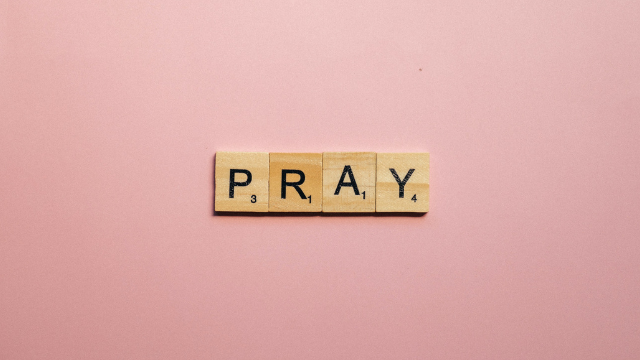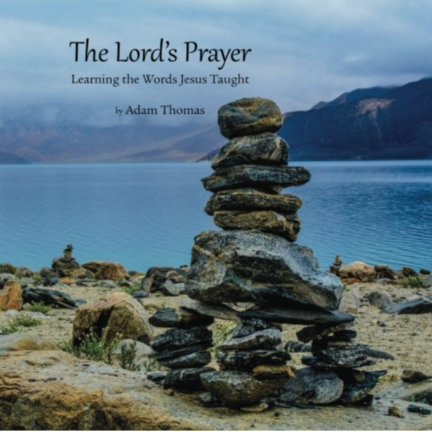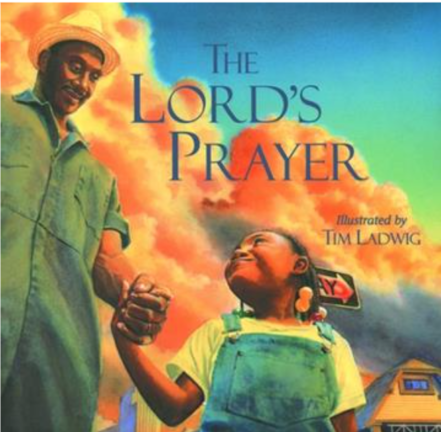
How do you pray? What personal practices do you have that bring you into relationship and conversation with the Spirit? How do prayer practices nurture your spiritual life and anchor your experience of gathering with others for meeting for worship? In my experience, we don’t talk a lot about prayer in Quaker religious education — how to pray with children, teach prayers to children, or why we might offer this as a practice for their “spiritual toolbox.” I’ve been collecting ideas and resources over time, hoping to bring together interested Friends to talk about prayer with children. On December 2, several Friends gathered for an online Religious Education Conversation on “Prayer with Children,” and what is shared below is from a presentation, participant sharing, and group reflections.
Sometimes we talk to God. We can tell God anything, and sometimes God talks to us. Most of all, though, we listen in the stillness. This is called prayer. We can pray anywhere, at any time, and God always listens with love. We may say thank you or I love you. We may say I’m angry, God, or I’m afraid, or — help! Sometimes we spend time with God without using any words. This is prayer, too. There are many, many ways to pray.
from the story “Prayer and Friends Meeting for Worship” in Faith & Play Stories
Quaker worship is not something that people — adults or children — understand by osmosis, but learn how to practice. Prayer is one way we might offer our children practices in centering and listening in waiting worship. This might look like holding others in the Light, remembering a spoken prayer, or creating a prayer of their own with words or movement. Beth Collea (Dover Meeting, NEYM), shares:
Prayer is for everyone. Prayer is for any moment, situation, or mood. We get better at Listening for God, the more we do it. Prayer changes us; it opens our hearts and imaginations toward more loving ways of living.
Praying with our whole selves
One participant in our RE Conversation described watching children at their meeting “practice praying” by folding their hands together and bowing their heads — Where had they learned to do that? Children obviously watch adults for modeling, and are curious what we might show them from our own practices. Younger Friends in the First Day program at Green Street Meeting explored prayer over several weeks last summer in their religious education program, including reading the 23rd Psalm out loud together, talking about how prayer can be something you ask God for help for other people (or pets), and making up a prayer “in a circle like the improv game where one person says one part of a story, and the next person has to keep it going.”
It’s also true that praying doesn’t need to look like penitent hands folded and head bowed — all our senses might be engaged! Some prayers are songs, and body prayers (which are a little like yoga poses) help us to remember or express the words we want to use (or not use — the movements themselves may be the prayer!). I’ve asked groups of children to “stand up, let’s do a prayer” and had them be surprised and then delighted that this act of piety can be one of movement and joy. We can use a 5-finger prayer, breath prayers — even make pretzels to learn about prayers! (See: “Additional prayer practices” handout, also linked at the end of this story.)
Other tactile ways to pray use prayer beads and prayer cubes. Fold origami boxes or use a wooden cube to write on the six sides people you want to pray for, or a word to help start a prayer (thank you, please, help, Light, love). The same can be done by stringing colorful and interesting shaped beads together to prompt people or ideas to pray for. These ideas leave open space for children to make choices and decide on their words, empowering them to pray as they are led. The writer Anne Lamott offers that there are really three basic prayers: Help, Thanks, and Wow. These might find their way into discussion of prayers with children, and on to their prayer cubes or beads.
Go for a walk!
Throughout time, walking has played an enormous role in the devotional life of people from all the world’s religions: prayers and mantra practice while walking, pilgrimage to sacred sites, walking the labyrinth, walking meditation, and informal spiritual practices that make the most of strolling, sauntering, or cavorting. — “Walking” by Frederic and Mary Ann Brussat, Spirituality & Practice
Labyrinths have long been use as a meditation and prayer tool. On a smaller scale, finger labyrinths — like coloring mandalas — might be made available to children in worship as prayer tools.
Prayers at Home
This Candle Prayer for home (and Friends of all ages!) is a lovely practice, which we share with thanks to Adria Gulizia in New York YM. Grounded in an exploration of the “Light” in the Gospel of John, “Even when we don’t know what to do or how to speak to God about what we are feeling, the Light is shining within us. We are never alone.”
In the “Faith at Home” section of the Quaker Religious Education Collaborative website, there are several wonderful resources for families and meetings:
- Welcoming Children into Prayer
- Making Prayer Part of Daily Life
- A Body Prayer for Home
- Creating a Prayer Corner
Another resource for practicing prayerful contemplation is a lectio divina for children, the “Love First Lectio” which brings together reading, meditation, and prayer. While it explains how to use the Bible for this practice, other prayers and stories might be used as well. The practice uses three stages, “lens, mirror, window,” to be looking for love in the text.
The way Jesus taught his friends to pray
My family attended a UCC church until I was in Kindergarten and we joined Millville Meeting, and while I remember little from that first faith community, I had learned by heart the prayer that is sometimes called, “The Lord’s Prayer” — the way that Jesus taught his disciples to pray. The prayer can be found (with some wording differences) in both Matthew 6:9-13 and Luke 11: 2-4, and there are many resources for ways to share it with children. Why share it with Quaker kids, when we do not include a recitation of it in our worship? For some, having a prayer with familiar words may be a comfort in times of anxiety or sadness. The prayer also offers the opportunity among Friends to explore its message and how we and people of Christian faiths connect with its meaning. In our RE Conversation, a Friend offered that memorizing a prayer allows it to rest in a child’s heart, becoming part of them and available as needed.
Materials have been created for teaching and wondering about this particular prayer:
Illustrated Ministry: 6-part exploration of Matthew 6:9-13
An invitation to experience this well-known prayer through art, reflection, and discussion. Through the use of inclusive language and meaningful theology, children have opportunities to explore our belongingness and connectedness to each other, the world, and God. Not only that but how that belongingness and connectedness means we must also collaborate with God to bring God’s kingdom into the world. 

Lord’s Prayer in a Bag — an interactive activity for children and also adults.
Two wonderful children’s books — this version (far right) uses photographs from nature and the book illustrated by Tim Ladwig tells the story of a father and daughter who spend the day helping an elderly neighbor, creating “on earth as it is in heaven.”
For Friends who are trained to use Godly Play/Faith & Play stories, there is an unpublished story about this prayer that I’m happy to share with you directly.
There are many ways to explore prayer and praying with children! We can keep these practices simple and accessible for children, while encouraging them to find comfort, grounding, and closeness to God in the many ways and words of prayer.
Resources
- Slides from December 2, 2021 Religious Education Conversation
- Additional prayer practices handout (5-finger prayer, labyrinth, breath prayers, nature prayer walk, pretzel prayer)
- “Quakers and Prayer” newcomers card from Friends General Conference
- Faith at Home section of the QREC website
- Praying a Labyrinth
- Prayers for Faithful Families by Traci Smith
- “Religious vocabulary in children’s prayer language: a small-scale case study in three UK schools” Fay Rowland in Practical Theology (2019)
Image credits: Pexels